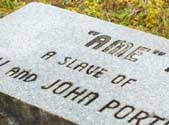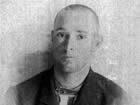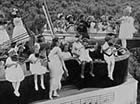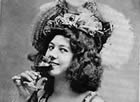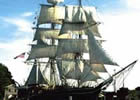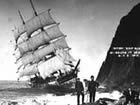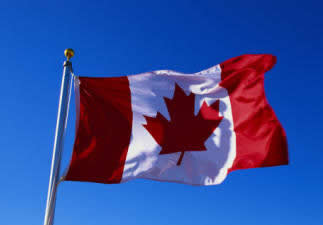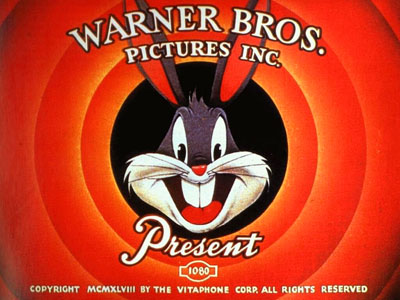“Voice of Looney Toons” was the terror of his Portland high school
His teachers may not have appreciated Mel Blanc's humor and talents, but Portland radio listeners sure did — and later, so did generations of Bugs Bunny fans.
Legendary voice man Mel Blanc, the voice of Bugs Bunny and dozens
of other cartoon characters, in 1976. Blanc grew up in 1920s Portland.
(Photo: Alan Light) [Larger image: 800 x 1156 px]
By Finn J.D. John — December 18, 2011
The hallway at Lincoln High School in Portland was empty except for a fourteen-year-old student named Melvin Blank, who was walking along listening to the echo his footsteps made.
Melvin was probably there to serve a term of detention. He was a classic classroom clown, the kind of kid that makes teachers remove their hair by the fistful. Melvin was by no means a bad kid. But he had a round, cherubic face that seemed permanently set in a slightly-mischievous smile, a zany sense of humor, and a seeming inability to sit still and keep his mouth shut during classroom time. He also had a freakish ability to imitate voices — including, of course, those of his teachers.
On this particular day, Melvin had worked out a wonderfully wild, slightly sinister, cackling laugh that he no doubt hoped to use one day in a classroom when a teacher wasn’t looking. The hallway’s acoustics were so perfect, he just had to try it out. Melvin ran down the hall, shrieking out his laugh and enjoying the echoes as the empty high-school hall reverberated with the racket.
At the end of the hall, he discovered that he wasn’t quite alone in the school. There with him, looking utterly unimpressed with his voice talents, stood the principal of Lincoln High — a fellow who knew Melvin well after numerous referrals to his office for classroom disruptions.
“My nervous explanation about utilizing the hallway’s natural echo did not evoke a shred of compassion, the principal’s frown deepening by the second,” Melvin recounted later, in his memoirs. “The second I finished, he exploded, ‘I should kick you out of this school!’ but he never did.”
A panel from the intro credits of a classic 1948 Looney Toons cartoon.
Bugs Bunny was Mel Blanc's most popular character.
[Larger image:
1200 x 900 px]
Twenty years later, that principal — and the rest of the country — was undoubtedly very familiar with that laugh. It belonged to a cartoon character named Woody Woodpecker.
Melvin Blank, the boisterous and clownish Lincoln High School student, is better known today as Mel Blanc — the voice of Bugs Bunny, Daffy Duck, Yosemite Sam, Pepe le Pew, Barney Rubble and about five dozen other cartoon characters from the “golden age of cartoons” around World War II.
Mel’s story is fantastic and complicated, and generally far too good for a short newspaper column to do justice to. If you have even the slightest interest, you ought to check out his 1988 memoir. But here are a few of the high points of his Oregon story:
Blanc’s Oregon boyhood
Mel was born in San Francisco in 1908, but moved with his parents to Portland soon after and grew up in the Rose City. And in fact, if Portland’s radio-station owners had not been so stingy, he might well have remained in Oregon, pouring his talents out on the local market here. Which, you have to admit, would have been a rotten shame.
The funny lad first got on the radio when he was 19. Someone from local radio station KGW got hold of him and asked if he might like to perform on an evening radio program called “The Hoot Owls.”
The pay was negligible. But for young Mel, the experience was solid gold. From singing funny songs, he moved into a comedy routine and developed formidable ad-libbing skills. Meanwhile, to keep enough money coming in to eat, he started playing tuba for a couple nine-man big-band ensembles.
Mel continued this way for several years, supporting his Hoot Owl habit as an increasingly successful tuba player and orchestra conductor. But in 1932, he decided he just had to go to Hollywood and try to make it big as a voice artist.
So he loaded up his old Ford Model A and headed south.
Of course, 1932 was probably the worst year you could possibly choose to try something like that.
California, here he comes …
In Hollywood, Mel worked sporadically on one-shot appearances on radio comedies and spent most of his time working a circuit of employment offices at studios and radio stations. His ability to take a “no” from a rude front-office flunky and bounce back smiling and confident five minutes later, walking through the door of his next prospect, became legendary … but not legendary enough to land him steady work. After all, there was a Depression on.
All told, Mel’s trip to Hollywood was a bust. Except for one thing: He met his wife there — a fellow radio person named Estelle Rosenbaum.
Finally one day Mel got a “big break” in Hollywood ... well, sort of. It came in the mail, postmarked from Portland. Radio Station KEX was offering him his own radio show if he would come on home. And would he? You bet.
California, there he goes
Estelle, a native Californian, was a bit apprehensive. “Is it really as rainy as people say?” she asked him.
“Naw, it’s not too bad,” Mel replied. He should have known better than to tempt the weather gods like that. When they arrived, of course, it was pouring.
Their show was called “Cobwebs and Nuts.” Although only Mel was paid for it, Mel and Estelle both worked in the studios at 1190 KEX for 16 hours a day, furiously writing, prepping and broadcasting the show, which got very popular. Mel and Estelle became local celebrities, and the show was moved to the more prestigious 620 KGW station. But the couple, although famous, was still getting by on just $60 a month. Mel recounts a time when the two of them drove to Vancouver for a five-cent bag of caramel corn and discovered, on arrival, that they were one cent short.
Of course, it was the Great Depression, so the impoverished couple had plenty of company. But still, it was a lot of work and they were getting nowhere, and “Cobwebs and Nuts” had stopped being fun to do.
Back to Hollywood, this time to stay
Finally one day, Estelle looked at Mel and said, “Do you want to have a nervous breakdown, or do you want to go back to Los Angeles? … Mel, if we’re going to be broke, at least let’s be broke someplace where it’s warm.”
That was all Mel needed to hear. This time, when Mel left Portland, he didn’t come back.
But his voice sure did.
(Sources: Blanc, Mel. That’s Not All, Folks. Los Angeles: Warner, 1988; Rayburn, John. Cat whiskers and talking furniture. Jefferson, N.C.: McFarland, 1998; Oregon Cartoon Institute’s Mel Blanc Project, https://melblancproject.wordpress.com/)
TAGS: #Topic152 #MelBlanc #VoiceOfBugsBunny #LincolnHighSchool #WarnerBros #LincolnHighSchool #MelvinBlank #WoodyWoodpecker #KGWOrderOfHootOwls #Tuba #FordModelA #EstelleRosenbaum #RadioKEX #CobwebsAndNuts #JohnRayburn #OregonCartoonInstitute #PDXmetro #MULTNOMAHcounty









